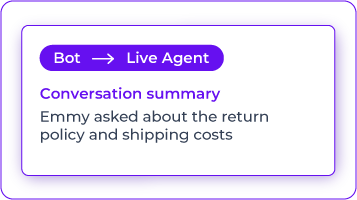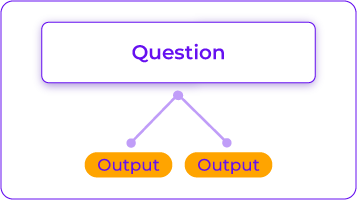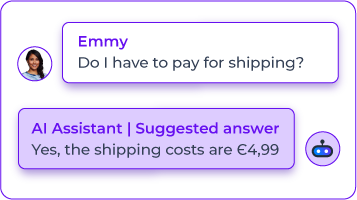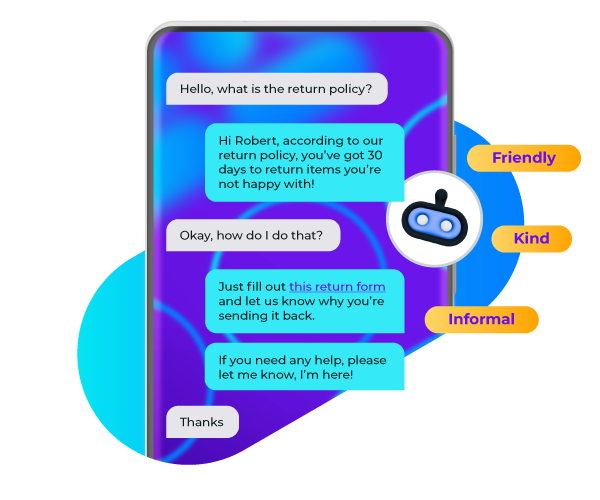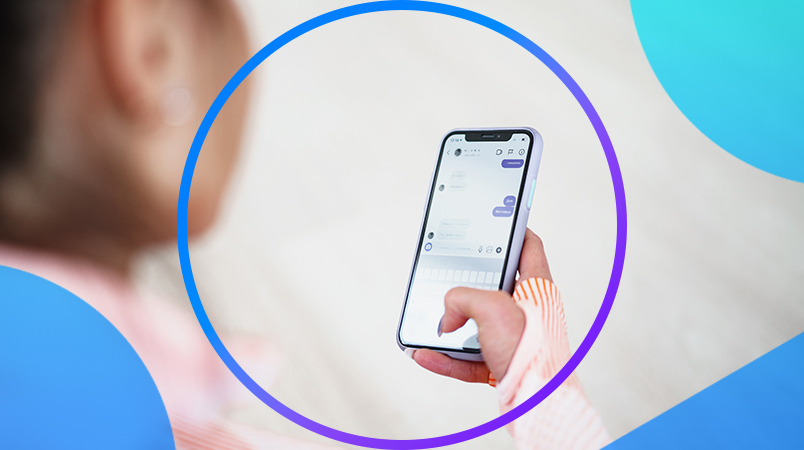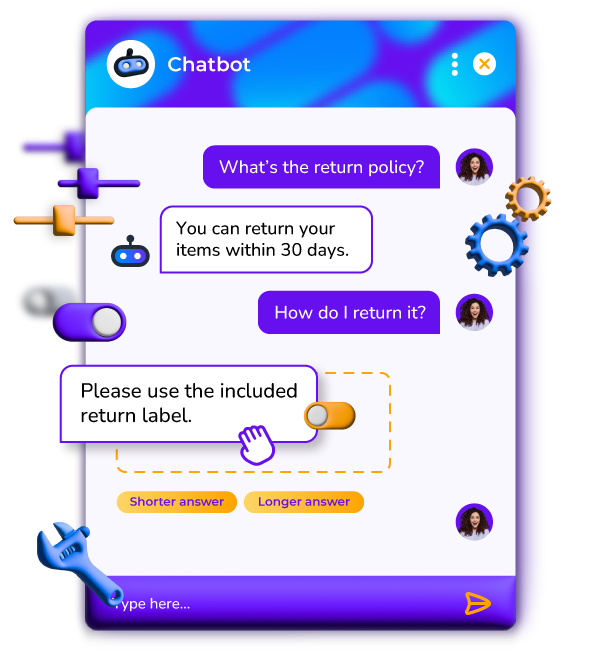
Ensure your chatbot can help customers in a personal way with data or, if needed, hand it over to a live agent.
Use your chatbots to help customers with transactions, whether a purchase, information or status update.
Make your chatbot available across any channel, including your website, WhatsApp, Instagram and more.
Ensure your chatbot feels natural, understands what customers want and offers relevant, helpful solutions.
Say goodbye to clunky scripts. Generative AI transforms chatbots into dynamic, human-like conversationalists in any language at scale—no coding needed. Enabling you to elevate customer support 24/7.
Natural language flows
High contextual awareness
Multi-lingual support
Generative AI processes user data, so data protection is key. Rest assured, your data is stored in the European region for compliance and remains confidential. It will never contain Personal Identifiable Information (PII) and will not be used to train large language models.
You can trust our bot to have valuable conversations with your customers. We have implemented measures against hallucinatory responses and malicious prompt injections.
Enter PlaygroundDFS integrated an AI chatbot into its existing platform to help automate conversations and deliver exceptional customer experiences, improving customer satisfaction rates by 29%.
Missguided uses a chatbot to answer frequently asked customer questions and remove pressure from the customer service agents, decreasing live contacts and costs by 14%.
DHL Parcel Benelux uses Chatbot Tracy to communicate with both businesses and consumers, providing real-time order updates and responding to customer service inquiries.
Domino's uses a WhatsApp chatbot to connect with more candidates and collect relevant information from the first message, including name, age, and address to build a candidate profile.




A chatbot is software that interacts with a human through written language. Chatbots are often found on websites or messaging channels such as WhatsApp, automating conversations and connecting customers with companies 24/7. Chatbots can answer customer inquiries without human agents, thus providing affordable effortless customer service.
Learn moreA voicebot, also known as Conversational IVR, is software that uses AI, Natural Language Understanding (NLU) and speech-to-text (STT) alongside text-to-speech (TTS), to understand the intent and meaning of a human and respond in human language. Voicebots are often found via customer service numbers, allowing callers to engage with a self-service solution with their voice rather than speaking with a human agent.
Learn moreLive chat involves a live conversation between a company’s employee and a customer or lead. Chatbots refer to automated conversations with a customer or prospect and software. Chatbots can answer a range of predefined questions, such as 'What are your opening hours?' More sophisticated AI chatbots can help customers with subscription renewals, changing an address, or ordering food.
Read moreCM.com’s chatbots are compatible with the infrastructure and systems that your business currently uses and can be easily integrated with little or no code. In addition, integrate your data to make it even smarter and more effective with the passing of time. With standardised integrations ready to go, any configuration is possible. It’s truly a plug-and-play set-up.
Read moreGenAI leverages the power of Large Language Models (LLMs), while protecting against their common pitfalls such as incorrectness & inappropriateness. This is done by using a Retrieval Augmented Generation framework (RAG).
Learn moreIn an age of mass marketing, it’s safe to say peak sales periods, especially Black Friday and the holiday season, can be overwhelming for consumers. Consumers receive irrelevant information from companies that doesn't match their personal needs and desires, so it's no surprise people might want to switch off and tune out all forms of marketing until the season is over. As an eCommerce player, you should always be looking to avoid this by diversifying and personalising your marketing strategy in a way that suits your customers' needs.
As a member of the customer service team, you stand on the frontline of customer interaction every day. In a world where customers demand quick and personalised service, long wait times, impersonal responses, or worse, incorrect answers, can quickly drive a customer away. Your goal, however, is to connect customers with your organisation and deliver the best answers and service possible.
Meeting customers' expectations remains the biggest challenge in service. Speed, convenience, and accurate responses are critical to achieving this. With the power of Generative AI, customer questions can be identified, categorised, and resolved more quickly. Plus, your organisation is continuously fed with data to improve the entire customer journey.
In the real world, people use different environments to achieve different goals. They’ll go to brick-and-mortar shops to compare prices and competitors. Visit a showroom to experience products up close. Or schedule a meeting to see a live demo. But is that how it works in the digital world? Yes, it is. The digital world has various environments, too, from websites to messaging channels, social platforms and more.
Every channel where customers interact with a brand offers a different experience. Among the most distinctive is Instagram. Unlike other social media apps, Instagram users scrolling through posts often feel a deeply personal connection with the sources they follow: celebrities, favourite products, and subjects they’re passionate about. It’s a community built on trusting influential people.
Facebook. Instagram. TikTok. There’s a rainbow of social media channels available to customers today. Some are visual; some are about connecting with friends; others are more business-like. But if there’s a single channel that spans communication in all its varieties, it’s Meta-owned WhatsApp.
Chatbots spent a decade-plus as a technological sideline: nestling at the corner of websites, roaming the odd FAQ, inviting people to click with a hopeful link. They weren’t a big part of the customer experience. But now – suddenly – they’re everywhere.
With increased consumer and business choice comes increased pressure on sales teams. Now more than ever, it’s vital to ensure leads are qualified and every sales team member is maximising their chances of converting. Equally, cross-selling to existing customers and growing revenue per user is crucial to building incremental revenue. So how can you generate a large volume of leads, qualify them and ensure your team is only going after those leads most likely to convert?
Having a chatbot on your website or social channels is a good start. After all, it shows that you care about delivering a great experience to your customers, and you want them to be able to contact you in a way that’s convenient for them. However, if that chatbot doesn’t provide a great customer experience, it can instantly undo much of that goodwill. A chatbot is only as good as the answers it offers. Here are four key chatbot components you need to consider.
Select a region to show relevant information. This may change the language.
